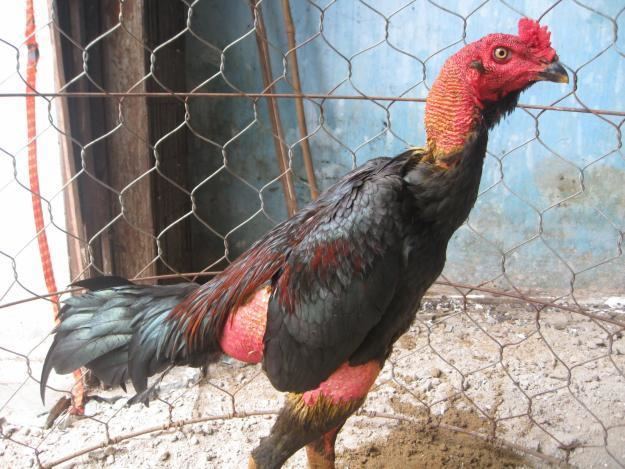Yu Shamo Noti
Background Losses in poultry production due to heat stress have considerable negative economic consequences. Previous studies in poultry have elucidated a genetic influence on response to heat. Using a unique chicken genetic resource, we identified genomic regions associated with body temperature (BT), body weight (BW), breast yield, and digestibility measured during heat stress. Identifying genes associated with a favorable response during high ambient temperature can facilitate genetic selection of heat-resilient chickens. Methods Generations F18 and F19 of a broiler (heat-susceptible) × Fayoumi (heat-resistant) advanced intercross line (AIL) were used to fine-map quantitative trait loci (QTL). Six hundred and thirty-one birds were exposed to daily heat cycles from 22 to 28 days of age, and phenotypes were measured before heat treatment, on the 1st day and after 1 week of heat treatment. BT was measured at these three phases and BW at pre-heat treatment and after 1 week of heat treatment.
Breast muscle yield was calculated as the percentage of BW at day 28. Ileal feed digestibility was assayed from digesta collected from the ileum at day 28. Four hundred and sixty-eight AIL were genotyped using the 600 K Affymetrix chicken SNP (single nucleotide polymorphism) array. Trait heritabilities were estimated using an animal model. A genome-wide association study (GWAS) for these traits and changes in BT and BW was conducted using Bayesian analyses. Hashar movie free download dvdrip. Candidate genes were identified within 200-kb regions around SNPs with significant association signals.

Background The climate is becoming increasingly warmer, according to the Intergovernmental Panel on Climate Change, and the global average temperature will continue to increase by 0.2 °C per decade. Heat stress in poultry impacts animal production and welfare and, in the poultry industry, it causes an estimated economic loss of $125 to 165 million in the US, with the broiler industry alone accounting for $58.1 million []. In 2007, an extreme heat wave in California resulted in more than 700,000 deaths in poultry [] and in 2009, over 1.5 million layer hens died during a summer heat wave (National Oceanic and Atmospheric Association). Production losses due to heat stress may result from mortality, reduced body weight, reduced egg production, reduced feed intake, and higher feed to gain ratio. A recent study on broilers that were exposed to chronic heat stress from 1 to 42 days of age showed a reduced body weight (32.6%), increased feed conversion ratio (25.6%), and reduced feed intake (16.4%) [], and another study using shorter periods of heat stress on younger birds, from 2 to 4 weeks of age showed a reduced feed intake by 14% []. In a paired feed study, genetically lean broilers that were exposed to chronic heat stress, from hatch to 9 weeks of age showed increased weight gain and feed efficiency compared to less lean counterparts, which supports the hypothesis that increased fat accretion is inversely related to thermo-regulation []. Previous studies in poultry have elucidated a genetic influence on response to heat.
Layers that were divergently selected for heat tolerance displayed differences in survivability during increased heat conditions []. Significant differences in production traits have been found between a commercially fast growing chicken line and a local chicken breed from China during heat stress []. Microsatellites were used to identify quantitative trait loci (QTL) for several traits measured during heat stress in a Japanese quail F2 intercross including body weight (BW), feed intake, and body temperature (BT) []. Because in poultry, response to heat stress involves a genetic component, it is possible to use genomic selection for heat tolerance, which will increase accuracies and response to selection []. To increase our understanding of the genetic influence on response to heat stress in chickens, we used the F18 and F19 generations of a broiler (heat-susceptible) × Fayoumi (heat-resistant) advanced intercross line (AIL) and an environmentally-controlled experiment to identify genomic markers related to response to high ambient temperatures.
Cristian Palacio is on Facebook. Join Facebook to connect with Cristian Palacio and others you may know. Facebook gives people the power to share. Dec 17, 2015. Broiler and layer [49], and Shamo and White Plymouth Rock [57]. Kranis A, Gheyas AA, Boschiero C, Turner F, Yu L, Smith S, et al.
Chickens of this AIL were exposed to high ambient temperatures for 7 days during which BW, BT, breast yield, and digestibility were measured. These traits, as well as the changes in BT and BW due to heat treatment, were used for genome-wide association studies (GWAS). The genes and markers associated with thermal tolerance can help elucidate the genetic architecture of traits involved in heat stress and, subsequently, be used to breed more heat-resilient chickens. Chicken lines All animal experiments were approved by the Institutional Animal Care and Use Committee at Iowa State University: Log #4-11-7128-G. We used the F18 and F19 generations of an AIL between two highly divergent chicken lines for thermo-tolerance, i.e.